This article includes highlights of the MyCouponize adware issue on Mac and provides a tutorial on removing the associated unwelcome ads from web pages.
It’s definitely a nuisance when multiple ads inflate every web page visited by a Mac user. Regular ecommerce campaigns typically aren’t too irritating and preserve the balance between user experience and effective product promotion online. It’s all entirely different when a PUP (potentially unwanted program) like MyCouponize comes into play. In this case, numerous redundant advertisements will be occupying the greater space of websites accessed from a Mac machine compromised by said offending code. These obnoxious objects include large comparison shopping blocks, deals, banners, hyperlinked inline text and full-page interstitial ads. It’s important to delineate the difference between adware activity and commonplace advertising on the Internet: the former only affects hosts previously hit by a culprit like MyCouponize.

The adware under scrutiny tends to slither its way into Macs as part of bundled downloads. Again, there is a thin line between run-of-the-mill application bundling and one that poses risk to computers. The dark facet of this matter revolves around the inclusion of PUPs into compound freeware installation clients. Unfortunately, most users accept the default setup option in such scenarios without even paying attention what else is on board. By going the ‘custom installation’ route instead, people will usually see the full list of programs being cross-promoted and be able to deselect what they deem potentially excess or harmful. Anyway, the click-through habit isn’t a good thing when it comes to Mac software bundles as it may well lead to unauthorized installation of malicious entities. This particular infection tends to infiltrate systems via booby-trapped Adobe Flash Player installers.
When MyCouponize virus ends up inside a computer, it adds a new extension to Safari, Chrome and Firefox if detected. While running in the background, this cross-browser add-on spawns a virtual layer on top of websites visited by the victim. It’s this layer that encompasses the entirety of undesired sponsored content being displayed during web surfing sessions. To add insult to injury, the adware also deploys a kind of reconnaissance on the plagued machine. It tracks the user’s web browsing history in order to build a profile based on their lifestyle and interests and display targeted ads. Therefore, there is obviously a distinct spyware hue in this attack. Ultimately, victims are confronted with irritating ads all over web pages and run the risk of getting their privacy infringed. Read the following sections carefully to learn how to sort things out if MyCouponize virus is causing your Mac to act up.
MyCouponize virus manual removal for Mac
The steps listed below will walk you through the removal of this malicious application. Be sure to follow the instructions in the order specified.
• Open up the Utilities folder as shown below

• Locate the Activity Monitor icon on the screen and double-click on it
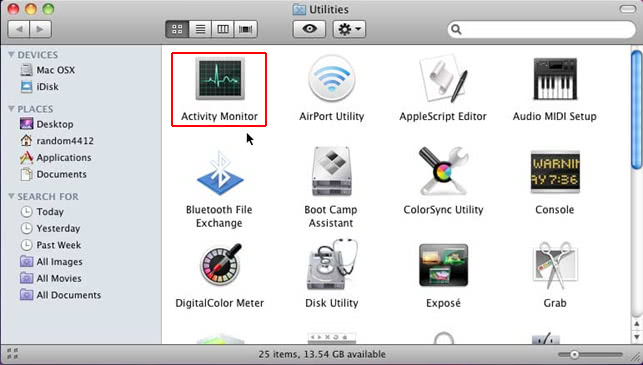
• Under Activity Monitor, find the entry/entries for MyCouponize, Shopperify, MyMacUpdater, MySoftUpdate, My-Soft-Update, or CoreUpdates, select it and click Quit Process
• A dialog should pop up, asking if you are sure you would like to quit the troublemaking process. Select the Force Quit option
• Click the Go button again, but this time select Applications on the list. Find the entry for MyCouponize on the interface, right-click on it and select Move to Trash. If user password is required, go ahead and enter it
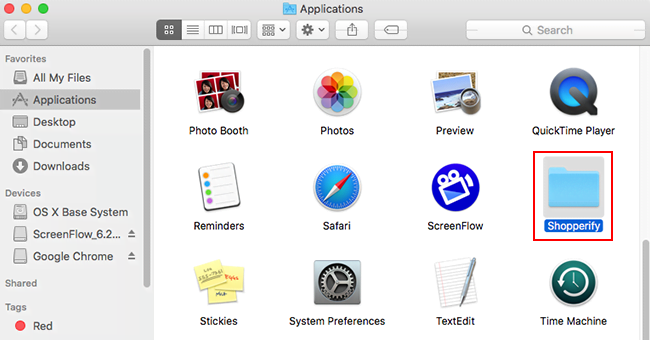
• Now go to Apple Menu and pick the System Preferences option
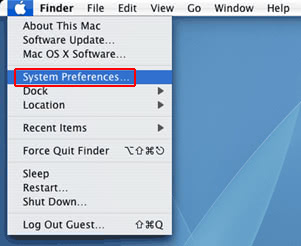
• Select Accounts and click the Login Items button. Mac OS will come up with the list of the items that launch when the box is started up. Locate MyCouponize there and click on the “-“ button
Get rid of MyCouponize ads in web browser
To begin with, settings for the web browser that got hit by MyCouponize ads virus should be restored to their default values. The overview of steps for this procedure is as follows:
1. Reset Safari
• Open the browser and go to Safari menu. Select Reset Safari in the drop-down list
• Make sure all the boxes are ticked on the interface and hit Reset
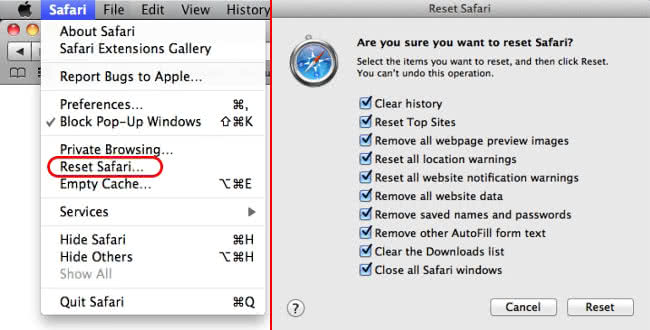
2. Reset Google Chrome
• Open Chrome and click the Customize and Control Google Chrome menu icon
• Select Options for a new window to appear
• Select Under the Hood tab, then click Reset to defaults button
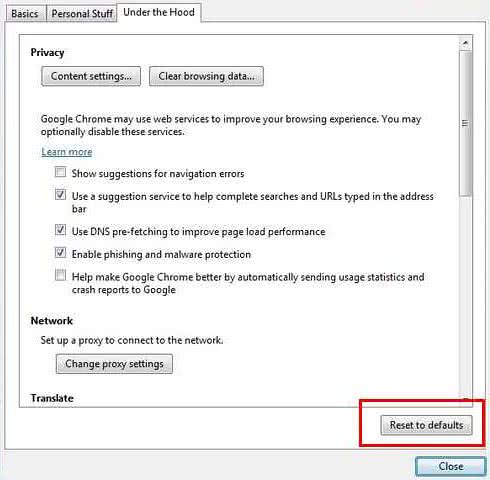
3. Reset Mozilla Firefox
• Open Firefox and select Help – Troubleshooting Information
• On the page that opened, click the Reset Firefox button

Get rid of MyCouponize virus using Combo Cleaner removal tool
The Mac maintenance and security app called Combo Cleaner is a one-stop tool to detect and remove MyCouponize virus virus. This technique has substantial benefits over manual cleanup, because the utility gets hourly virus definition updates and can accurately spot even the newest Mac infections.
Furthermore, the automatic solution will find the core files of the malware deep down the system structure, which might otherwise be a challenge to locate. Here’s a walkthrough to sort out the MyCouponize virus issue using Combo Cleaner:
- Download Combo Cleaner installer. When done, double-click the combocleaner.dmg file and follow the prompts to install the tool onto your Mac.
By downloading any applications recommended on this website you agree to our Terms and Conditions and Privacy Policy. The free scanner checks whether your Mac is infected. To get rid of malware, you need to purchase the Premium version of Combo Cleaner.
- Open the app from your Launchpad and let it run an update of the malware signature database to make sure it can identify the latest threats.
- Click the Start Combo Scan button to check your Mac for malicious activity as well as performance issues.

- Examine the scan results. If the report says “No Threats”, then you are on the right track with the manual cleaning and can safely proceed to tidy up the web browser that may continue to act up due to the after-effects of the malware attack (see instructions above).

- In case Combo Cleaner has detected malicious code, click the Remove Selected Items button and have the utility remove MyCouponize virus threat along with any other viruses, PUPs (potentially unwanted programs), or junk files that don’t belong on your Mac.

- Once you have made doubly sure that the malicious app is uninstalled, the browser-level troubleshooting might still be on your to-do list. If your preferred browser is affected, resort to the previous section of this tutorial to revert to hassle-free web surfing.



